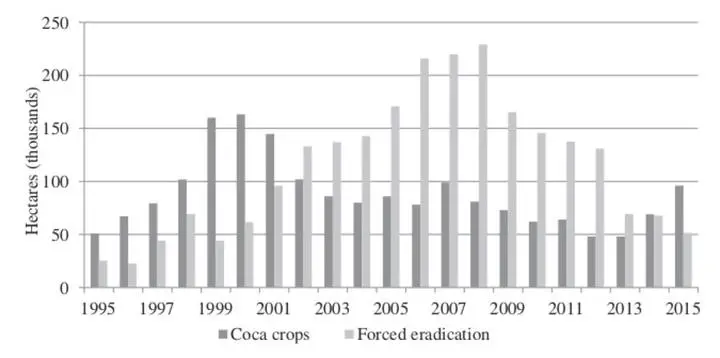Social Investment and Smallholder Coca Cultivation in Colombia
 Image credit: Eleonora Dávalos
Image credit: Eleonora Dávalos
Abstract
Colombia is the largest supplier of coca leaf in the world, and fields smaller than one-hectare account for more than 60 per cent of cultivation. Despite the obvious relevance of smallholding growers to the strategies to control illicit crops, there are few insights into what motivates these smallholders to cultivate coca. We analyse the motivations of coca growers by estimating a discrete choice model including head of household characteristics, household variables, and agricultural unit attributes. We found that extremely poor farmers are more likely to grow coca than non-poor farmers in the same area, while households connected to the energy grid, with access to credit, and receiving cash payments for their licit crops, are less likely to grow coca crops. Our results suggest that strategies aiming to discourage farmers from growing coca should: 1) target specifically the poorest households in the region and not just seek to improve general living conditions, 2) expand rural electrification, and 3) enhance legal productivity by providing access to credit, technical support, and/or contracts on harvests before planting.